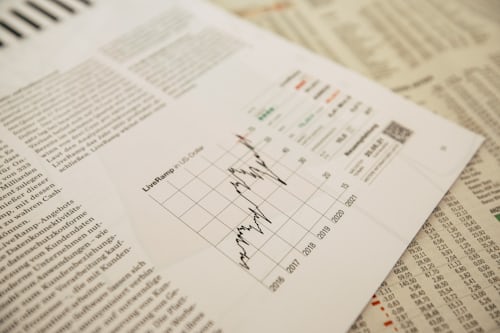Modern Portfolio Theory Explained - Definition
Modern portfolio theory is a branch of capital market theory and goes back to the work of the US economist Harry M. Markowitz.
Info:
Harry Max Markowitz is an American economist who was born in Chicago in 1927. He studied economics at the University of Chicago and at the Aristotle University of Thessaloniki. He had studied under well-known personalities such as Milton Friedman, Tjalling Koopmans, Jacob Marschak and Leonard Savage.
The Nobel Prize winner and Chicago lecturer is considered the father of our current understanding of asset management and diversification.
In the 1950s, he developed a model that could prove that portfolios with broadly diversified inventories are much more efficient, thus reducing the risk of loss, as it were. Today, numerous robo-advisors use this approach to efficiently compile their portfolios.
Modern Portfolio Theory - Investing Independently
Markowitz came to the conclusion that investing independently in different asset classes was better for the performance of the portfolio. Independent means that investments should be made primarily across sectors and countries.
If possible, investments in different securities should not correlate at all or run towards 0. A 1-to-1 dependency should be avoided at all costs, as outliers in one position would massively reduce the value of the entire portfolio.
Example: Depending on the development, shares of oil companies correlate with the commodity oil itself. According to Markowitz, an investment in both shares of oil companies and oil would not be very efficient.
With the Markowitz theory, it is therefore possible to calculate which portfolio structure in Singapore Exness (selection and weighting of stocks) would yield the same return with lower risk than another portfolio that has a higher risk.
This optimisation of the relationship between risk and return is called efficiency.
Markowitz theory is itself considered modern portfolio theory and is the basis for numerous optimisations and extensions of various calculation models.
Modern portfolio theory as optimisation of the Markowitz theory
Further developments of the Markowitz theory are, for example, the Single Index Model (SIM), Capital Asset Pricing Model (CAPM) and the Arbitrage Pricing Theory (APT).
In the single-index model, the aim is to make an optimal portfolio selection based on only one parameter. The influencing factors are reduced to a single factor and focus on the return of the share and its index.
Despite diversification, there is still a risk in every portfolio. In order to be able to assess this risk (differently), the Markowitz theory was extended by the Capital Asset Pricing Model.
The Capital Asset Pricing Model calculates the risk of a portfolio on the basis of a theoretical equilibrium price of individual securities, which (theoretically) occurs with the same supply and demand. Based on the price of the market equilibrium, it is calculated whether the risk of a security in the portfolio is worthwhile or not. However, the capital asset pricing model has turned out to be impractical.
In contrast to this is the arbitrage pricing theory, which assumes that the future return of securities can be determined on the basis of a few market factors.
Conclusion
Modern Portfolio Theory was founded in 1952 by Harry M. Markowitz and subsequently extended by other calculation models. All models are concerned with finding the best securities (stocks, bonds, commodities, money market products) for a profitable portfolio, with the risk being as low as possible and the return as high as possible.
- Critical days in the life of parents - the rudeness of the child
- Short-term liabilities
- How to play Parimatch
- Betwinner betting company
- Rest in Odessa

